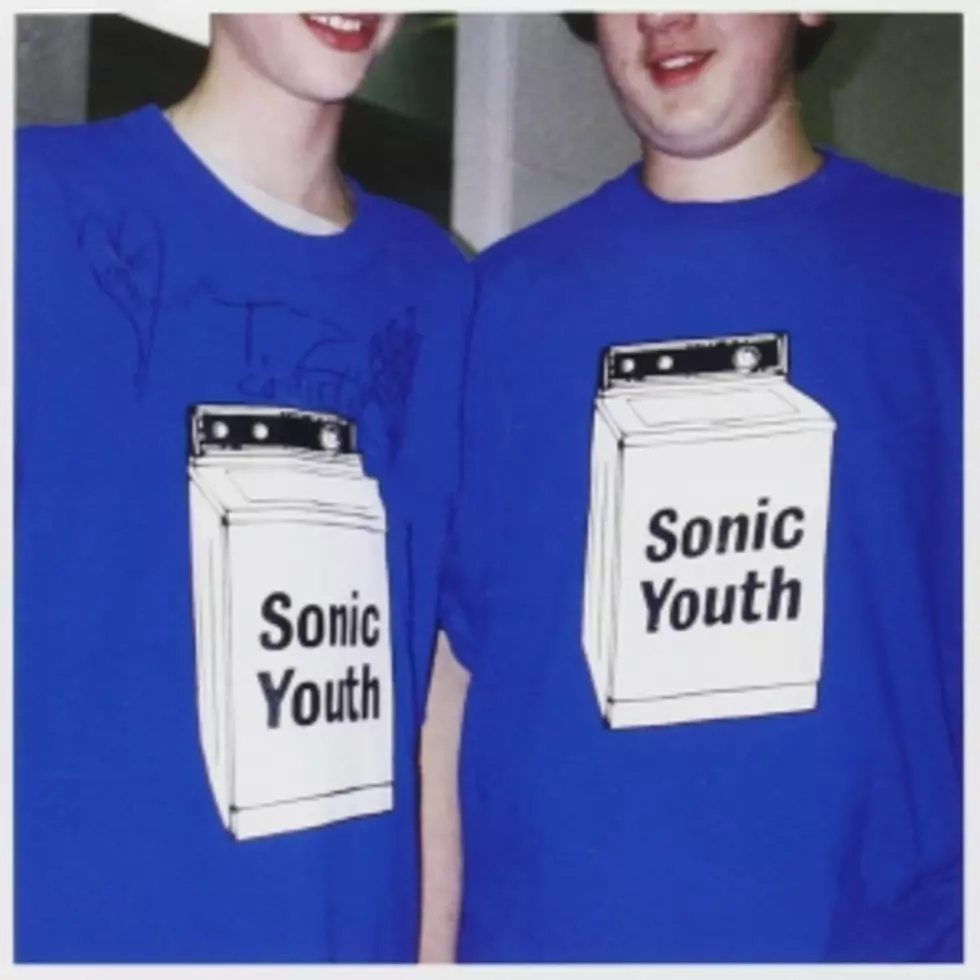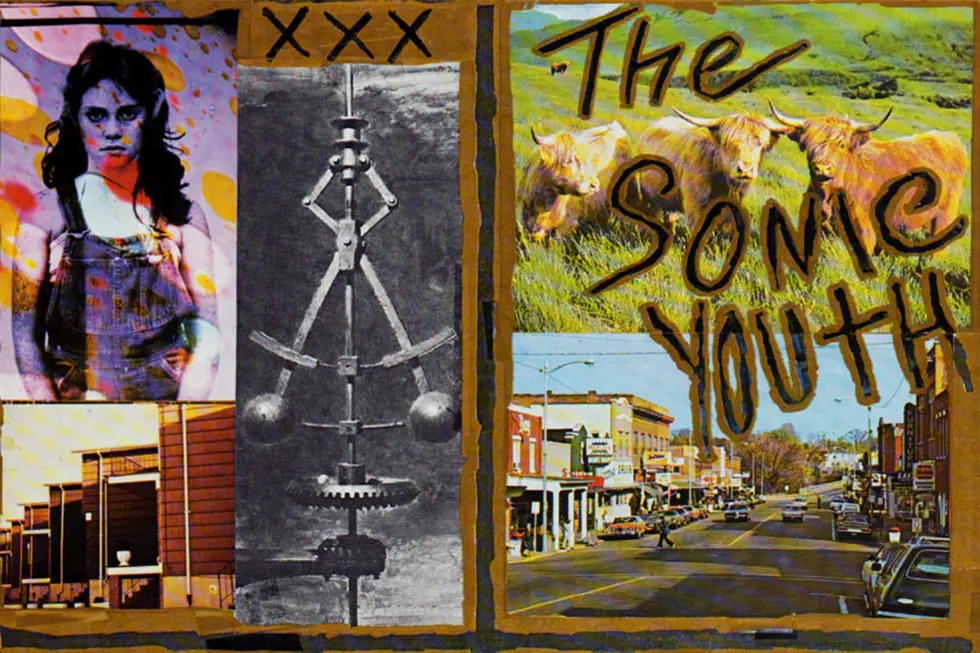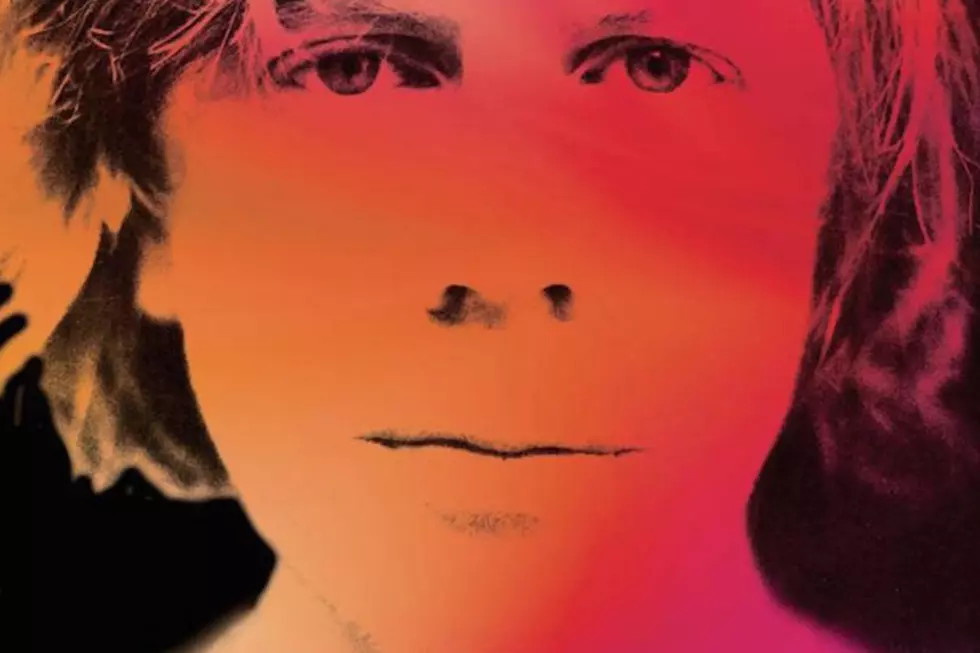
20 Years Ago: Sonic Youth Return to Their Experimental Roots with ‘Washing Machine’
"Time takes its crazy toll," Thurston Moore sings in "The Diamond Sea," but the last 20 years have been nothing but good to Sonic Youth's ninth album, 1995's Washing Machine.
That's likely because like a good household appliance, Washing Machine was built to last. Released the same week that Coolio's "Gangsta Paradise" was battling Shaggy's "Boombastic" in the charts, the album was in some ways more accessible than its predecessor, 1994's Experimental Jet Set, Trash and No Star, and in others even more uncompromising.
A lot happened in the year between the two albums. Kim Gordon and Thurston Moore welcomed their first baby to the planet and Moore recorded his first solo album, Psychic Hearts. In fact, every member of the band took on a side project or two. They regrouped in May 1995 to join R.E.M.'s ill-fated Monster tour, then turned around in July and headlined Lollapalooza. We can't forget their brilliant cover of "Superstar" for the If I Were A Carpenter tribute album around that time, too.
Moore told CMJ in November '95: "We played so much more in different contexts outside of the band. I feel we're still somewhat apprenticing to be a rock band." It's an assertion the feels a little disingenuous given that the band had been together a dozen years at that point, but there are two important points here: 1) Sonic Youth were never really a "rock band" in a conventional sense; 2) They definitely brought some of those "different contexts" to the studio for Washing Machine.
The most pronounced change was Kim Gordon strapping on six strings rather than her usual four for the bulk of the album, resulting in some of the heaviest guitar songs in the band's catalog. Album opener "Becuz" set the tone for the album's 11 tracks.
Sonic Youth's process was to play new songs live prior to recording so that they could "mutate into something more excited," according to Moore. The band's website notes that instrumental versions of "Becuz" and the title track got workouts in mid-March at shows in Spain, but by then recording was well under way, having begun in January. Recording was split between Mott and Greene Studios in New York City and Easley Studios in Memphis.
Moore suggested that the time in Memphis allowed them to get out from under the watchful eyes of their fans. That must have been a great relief for a band that walked a tightrope separating avant garde noise and popular acceptance. "We get such mixed signals from people," Moore says in the same CMJ interview. Some want us to stylize what we do and refine ourselves into something more marketable. Then there are people who come after us for going into pop territory."
It's an interesting problem to have, and one that likely was made even more challenging given the success of Experimental Jet Set. That album not only cracked the top 40, but its only single, "Bull in the Heather" found its way into heavy rotation on alternative radio stations throughout the country. Surely their label wanted more of the same (as did their new fans), so what did Sonic Youth do? Recorded the nearly 20 minute "The Diamond Sea" and then release it (in edited form) as the album's first single. On September 22, the band showed up on Letterman for a run through of the song:
The album may not have been released until late September, but the title Washing Machine was in place at least as early as April; well, sort of. Prior to the album's release, Moore told Puncture Magazine:
I think we're going to call it 'Washing Machine.' For a while we were thinking of changing the band's name to Washing Machine. Because Sonic Youth has become a brand name. I mean, I like the fact that we're nearing 40 and we're called Sonic Youth. It's the best thing about our name. But it's gotten so it carries so much baggage. In the end we thought our management wouldn't be too happy with the change...
We can date the "Washing Machine" concept to at least that April when the the band set out for a short college tour, shirts bearing images of washing machines were available at the merch tables -- the same shirts pictured on the album's cover. In fact, the cover features a photo taken by Kim Gordon at their April 28 stop in Amherst, Massachusetts. The models are Sonic Youth fans sporting their brand new shirts, signed by the opening band. Unfortunately, the two lucky fans were semi-beheaded in the image by the art department when they couldn't be located to grant their permission to use their likenesses, but not without a fairly earnest search on behalf of the band and its label. At one point, they even enlisted MTV's help to find the two individuals shown in Gordon's photo.
Some of the most successful moments on the album are also the most melodic. "Little Trouble Girl" is like a Shirelles song filtered through David Lynch -- simultaneously beautiful and disturbing, like a dream that's not quite terrifying but threatening to become so at any moment.
Rolling Stone cited the band's ability to keep listeners off balance as one of Washing Machine's great strengths. "One minute the rhythm crunch feels reassuringly conventional, the next minute it's all strung out and droning" wrote Tom Moon in his glowing review of the album. Robert Christgau gave the album a solid A- and noted that "it was a record that will startle no one and sound fresh in 2002."
In a way, Washing Machine marked the end of Sonic Youth's brush with the big time. They made several more albums before splitting in 2011, but here is where the sidewalk ends for their challenging aural soundscapes grabbing large mainstream audiences and media attention.
More From Diffuser.fm









